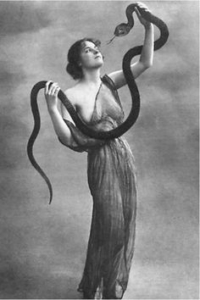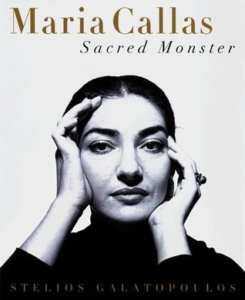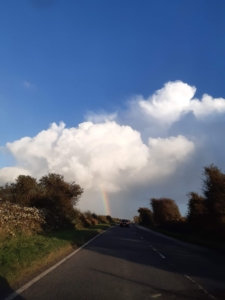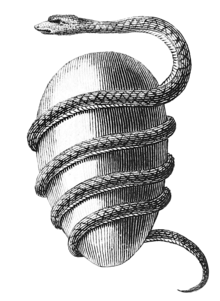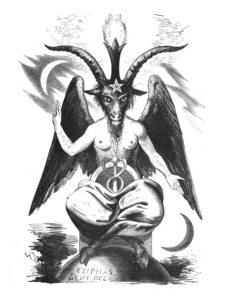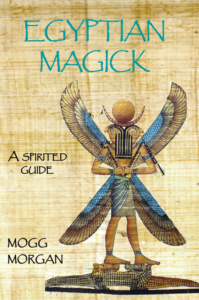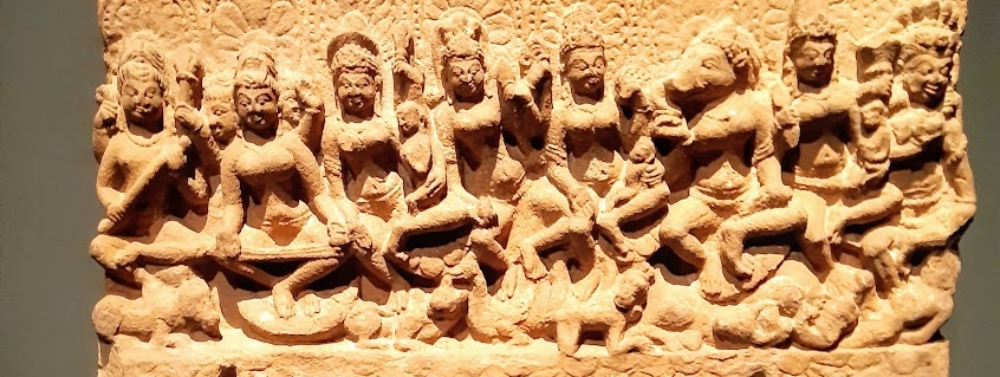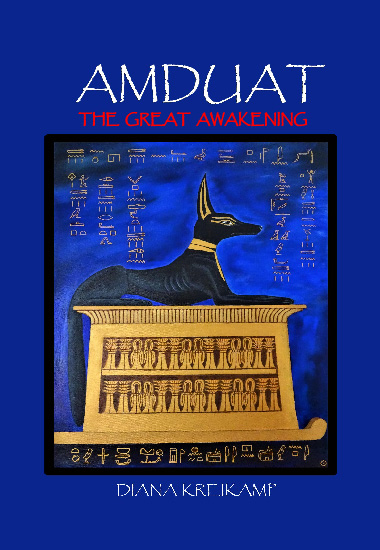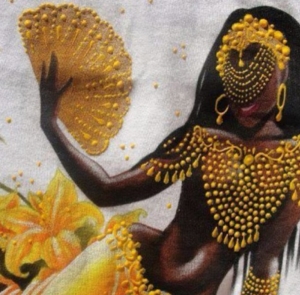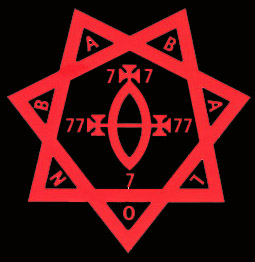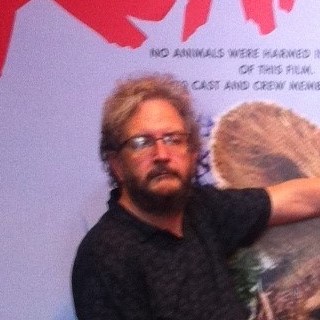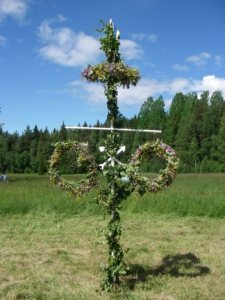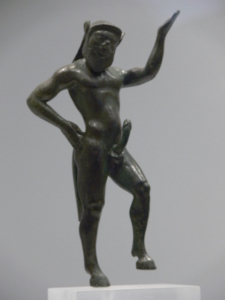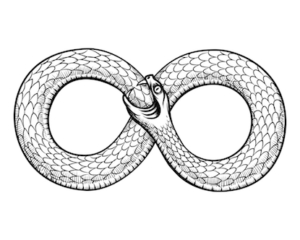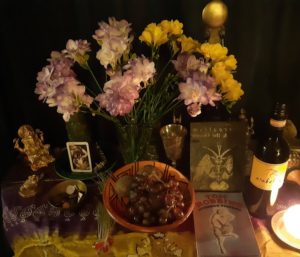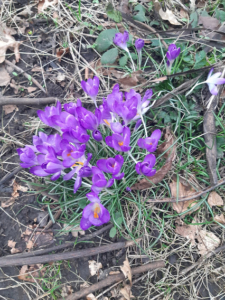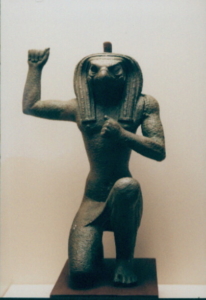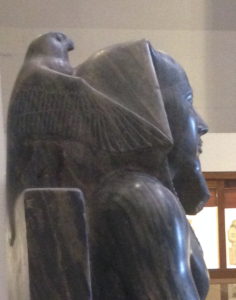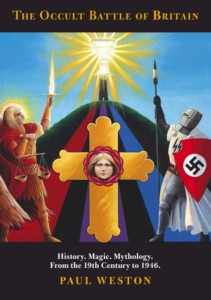
1.How did you become interested in the life of Aleister Crowley, Paul, to write your book Aleister Crowley and the Aeon of Horus?
1975 was the centenary of Crowley’s birth. I was 16 years old. I’d seen Led Zeppelin live twice that year and learned of Jimmy Page’s interest in some mysterious controversial figure. BBC Radio then featured a programme on Crowley and I made a point of listening. I was utterly fascinated by the diversity of his life: world-record mountaineer, yogi, mystic poet, occultist, sexual and drug pioneer, but also big-game hunter, writer of banned pornography, possessor of a formidable legend of infamy. From that point on, I was on the lookout for more information.
Colin Wilson’s summary of his life in The Occult and John Symonds biography The Great Beast told me a lot but were fairly hostile and contemptuous. It was reading the enormous autobiographical Confessions that really got me going as it was clear to me that Crowley was far more intelligent, interesting, and humorous than his critics. The seemingly strident egotism of it didn’t bother me in the slightest.
Robert Anton Wilson’s Cosmic Trigger opened me up to the extent of Crowley’s presence in the psychedelic sixties. I first heard of the episode involving Timothy Leary in the Algerian desert, where he seemed to follow in Crowley’s footsteps, which would later be heavily featured in my book. Robert Anton Wilson is undoubtedly the main inspiration for it. The Leary/Wilson eight-circuit map of consciousness provided the foundation of the section The Psychology of Thelema. RAW sometimes gets criticised by Thelemites but I think it’s important to remember that his ideas about Crowley were developed from his connections with Grady McMurty and Israel Regardie, who had both known Crowley and had important interaction with him. The Eye in the Triangle was a very important book, whatever people think of it now, and Regardie’s anthology of Crowley’s writing on drugs and his Gems From the Equinox were influential then. All of that formed part of my inspirations.
My book seemed to have its own agenda. I was writing my autobiographical Avalonian Aeon, which featured a lot of Crowley material, and I realised it was getting far too big and needed pruning. The idea came for a separate book. The scope of it just kept expanding. Having fully engaged in the project, I found myself in Cairo, on the feast days of The Book of the Law and even recited some of it in front of the Stele of Revealing that is so important a part in the story of how it came to be written. This was a wild outcome.
2.Many great names of the twentieth century are mentioned in the book. How did Crowley come to attract all of these famous names?
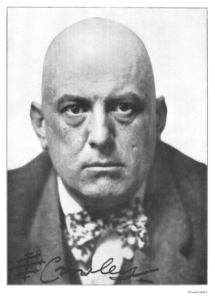
Crowley had a period of considerable fame in the twenties, albeit through a legend of infamy, so he stood out and got the attention of the naturally rebellious. I suggest in my book that, regardless of any personal failings, Crowley was an authentic prophet of the twentieth century in its diverse agony and ecstasy and his statements concerning how to navigate it: that we are unique Stars who must find our True Wills and act accordingly. I feel some people with remarkable gifts recognised that in his work and directly connected with it. Rocket scientist Jack Parsons was perhaps the most notable case. Avant-garde film-maker Kenneth Anger was another. Founder of modern Wicca Gerald Gardner inevitably looked into Crowley and met the Beast in person. Timothy Leary would have initially placed him in a lineage of drug experimenters but a more mysterious deeper connection eventually revealed itself.
3.What was Crowley’s relationship like with Yeats?
Crowley and Yeats were members of the Golden Dawn during the same period and were on opposite sides in a power struggle involving the Orders’ autocratic chief, Samuel Liddell Macgregor Mathers. Yeats thought of Crowley as a morally degenerate criminal type. Crowley felt that Yeats’ hostility to him was based on his jealousy of the Beast’s superior poetic gifts, a claim most would consider to be absurd. They appear to be very different characters but there are some strong similarities in the deeper passions that ruled their lives.
Yeats was obsessed with the idea of the daimon or higher genius. It was central to his consideration of himself as a poet and what true inspiration consisted of. It also informed his understanding of the Golden Dawn Kabbalistic teachings. Neshamah concerns what might be more generally thought of as the Soul, its higher aspects that allow one to have awareness of God. This is the Higher Genius. Its physical seat is the brain and its Kabbalistic placing is in the upper realms of the Tree of Life sephiroth Chokmah and Binah.
Crowley was stirred by the same concerns but in his case was particularly taken by the term Holy Guardian Angel. Mathers had translated some of the now legendary Sacred Magic of Abramelin the Mage, detailed instruction for a six-month retreat intended to achieve communion with the HGA. Crowley famously purchased the house at Boleskine at Loch Ness to enable him to give over to the procedure. This primarily involved strict adherence to Abramelin but he incorporated Golden Dawn details such as his own versification of a document dealing with the same material on the Neshamah that inspired Yeats in his daimon quest. People will argue as to whether HGA and daimon are essentially the same. For Yeats and Crowley, I look at where these ideas led them.
The main event of Crowley’s life was the reception from an allegedly non-human source of a text, supposedly dictated audibly to both he and his wife Rose, indicating the advent of a new epoch for the human race. There are great cycles, Aeons, in history and we have seen one where the Great Mother was the dominant religious form, followed by an era of the dying and resurrected God. Now we enter a time of the Crowned and Conquering Child, when our unique true identities are affirmed, free of constraint. Crowley believed that the source, named Aiwass, was his Holy Guardian Angel. The whole episode was considerably facilitated by the sudden onset of powerful psychism in Rose, who he had married the previous year.
Yeats married George Hyde Lees. Within days she suddenly gave over to prolonged psychism in the form of automatic writing from which enormous amounts of material emerged. The most notable outcome was Yeats work A Vision. This was a mystic view of enormous cycles of history and their significance in the destiny of individuals as revealed by their birthdates in relation to the phases of the moon. Yeats believed that his daimon was somehow collaborating with that of his wife in this production.
There are considerable differences between The Book of the Law and A Vision. The similarities are there, however. Yeats was driven by the daimon idea, Crowley by the Holy Guardian Angel. In each case, their wives developed a psychism that led to the creation of texts that each man considered to be their most important works. Both productions were framed by the concept of great historical cycles and concerned with establishing one’s true destiny.
4.Could you tell us about Crowley and the order of the Golden Dawn?
The most famous of all occult groups, The Hermetic Order of the Golden Dawn, was founded in London in 1888. The centre of gravity of their system was the Kabbalah, with its well-known glyph of the so-called Tree of Life, with its ten spheres, known as Sephiroth, linked together by twenty-two paths associated with the letters of the Hebrew alphabet. On this framework, into what Crowley later called a kind of filing cabinet, was attributed an enormous amount of material from what could be called the Western Mystery Tradition, including a lot of Egyptian details.
The twenty-two trumps of the tarot cards, the famous picture images of Death, the High Priestess, Wheel of Fortune and so on, were placed on the linking paths with their related Hebrew letters. A system of grades allowed practitioners to ascend the tree as their learning advanced. Each sphere involved particular studies and practices and initiatory rituals signified passage between them.
Although Mathers was undoubtedly aware of the masonic traditions of unknown superiors, the recent fame of Madame Blavatsky and her tales of contact with Himalayan Masters had brought the issue of Secret Chiefs some publicity. The single biggest point of contention around the Golden Dawn is Mathers’ assertion that he himself had met some of them. His story could easily be seen to be following the Blavatsky template. Some of these encounters were psychic. He worked with his clairvoyant wife Moina to obtain much of the higher level Golden Dawn material. Other meetings were allegedly physical. He believed that ‘they are human beings living on this Earth, but possessed of terrible and superhuman powers.’ His story of an encounter in Paris with a group of three of them can be seen as a strategy to confirm his complete authority over the Order. He claimed that terrific energy emanated from the mysterious beings that only an advanced adept could handle for more than a few minutes. It was strong enough to kill. Various intense physiological symptoms were reported during his different encounters such as problems with breathing, ‘cold sweats and bleeding from the nose, mouth and ears.’
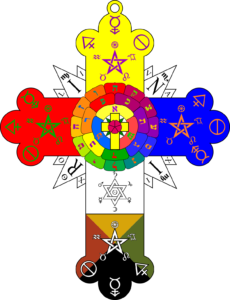
Aleister Crowley joined the group in 1898 when he was twenty-three years old. Rich from a family inheritance and with no need to earn a living, he was able to dedicate a lot of time and energy to learning the material and working through the lower grades. He was initially very impressed by Mathers and undoubtedly took him as a style template for the modern magician.
Although Crowley felt that his contact with Aiwass and the inauguration of a New Aeon annulled the authority and relevance of the original Golden Dawn, its basic structure and curriculum remained extremely important to him. There were certainly adjustments but the continuity is clear. He had taken oaths to keep the material secret but published much of it in his regular hefty journal The Equinox. This resulted in a court case with Mathers. Crowley’s subsequent claiming of various grades of attainment was always based on Golden Dawn ideas and terminology.
He was obviously willing to believe in the idea of Secret Chiefs as the 1904 Cairo episode shows. In the late collection of letters Magick Without Tears, he says of them, ‘They can induce a girl to embroider a tapestry or initiate a political movement to culminate in a world-war; all in pursuit of some plan wholly beyond the purview or the comprehension of the deepest and subtlest thinkers…But are They men, in the usual sense of the word? They may be incarnate or discarnate: it is a matter of Their convenience…’.
5.What is the UFO connection to Crowley?
Crowley’s 1919 drawing designated ‘Lam’ is the central focus of this contentious connection.
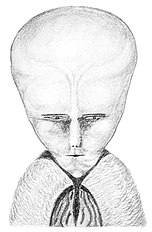
It’s important to be clear about the history of this image. In 1918, during a period when he was living in America, Crowley engaged in an extensive six-month long magickal episode known as the Amalantrah Working, primarily with the aid of his Scarlet Woman of the time, Roddie Minor. A combination of sex and drugs helped induce repeated consistent visionary material focused on a being named Amalantrah. Crowley was satisfied that the imagery and names produced were authentic in as much as they met his Qabalistic checking criteria. Towards the end of the written records of the working, Amalantrah made the enigmatic statements “It’s all in the egg”, “Thou art to go this Way.” Unusually for Crowley’s magickal records there appear to be details missing during the final phase.
The drawing seems to originate from the same period and depicts a being with an elongated egg-shaped head and no ears. It was publicly displayed in an exhibition of Crowley’s artwork in New York in 1919. It also featured as the frontispiece for an edition of HP Blavatsky’s short mystical work The Voice of the Silence with an extensive running commentary from Crowley. There it was designated as ‘The Way’ and given this explanation: ‘LAM is the Tibetan word for Way or Path, and LAMA is he who Goeth, the specific title of the Gods of Egypt, the Treader of the Path, in Buddhistic phraseology. Its numerical value is 71, the number of this book.’ It was later stated that the figure was Crowley’s ‘guru’ and ‘painted from life.’ That appears to be all that Crowley ever had to say about it. It is by no means clear that the word Lam is a name belonging to the being in the picture.
Decades later, in the final years of his life, he gave it to Kenneth Grant who featured it in his 1972 The Magical Revival, describing it as ‘Lam, an extra-terrestrial intelligence with whom Crowley was in astral contact.’ It became an iconic part of his Typhonian Trilogies, works promoting, amongst other things, ‘Extra-Terrestrial Gnosis’. This is not necessarily physical ETS in nuts and bolts spaceships. In this context, it designates experiences and intelligence not confined to the consensus three-dimensional coordinates of planet Earth. Higher-dimensional realms coterminous with 3D may well be the spaces these mysteries move through.
It was Grant who suggested that the Parsons-Hubbard-Cameron Babalon Working had perhaps ripped a hole in the fabric of reality through which the modern UFO era manifested, an idea that has now become quite widespread. In Outside the Circles of Time, he stated that ‘Parsons opened the door and something flew in. The flavour of that something is indicated by a strange episode that occurred in March 1946 at the time of the conclusion of the Babalon Working. Marjorie Cameron saw an unidentifiable aerial phenomenon. She was exhilarated, considering it to be a Thelemic sign, a ‘war engine’ mentioned in The Book of the Law. This event inevitably predisposed her to be particularly interested in a phenomenon that erupted into popular consciousness the following year.
Grant instigated a specific Cult of Lam after coming to feel that the portrait was a focus of an increasingly intense extra-terrestrial energy that would be of great importance. The basic Kenneth Grant position was that firstly Lam is a name and image of something that gives access to Extra-Terrestrial gnosis, a state of consciousness. Lam was intrinsically part of the Amalantrah Working which opened a portal of some kind to other dimensions. This makes Crowley the first modern-style ET contactee. It also opens up a consideration of what is the real nature of the Secret Chiefs of Occultism and in particular, Aiwass.
In the Cult of Lam, as initiated by Kenneth Grant and developed by his closest long-term associate Michael Staley, Lam is not necessarily a distinct entity but a trans-aeonic portal to gnosis outside of the circles of time. Something about his visual appearance potentially serves to stimulate aspects of consciousness otherwise dormant. He could be a mask for the experience of the Hidden God/Holy Guardian Angel…
The basic method of Lam meditation consisted of sitting silently in front of a copy of the Crowley picture staring into its eyes. The name was then repeated internally in the manner of a mantra. This process was considered sufficient to potentially stimulate an altered state of consciousness. As mood shifted an imaginative attempt would be made to enter into Lam’s head, the Egg of Spirit, and then look out from his eyes. Profoundly alien zones might be thus encountered or general mutations of consciousness allowing download access to previously unknown realms of being.
An extension of this procedure formulated by Michael Staley begins with the fact that the name Lam also happens to be a Sanskrit seed syllable featured in some Kundalini yoga systems referring to the base chakra wherein the great serpent power resides that can be raised up the spinal column through a progressive expansion of consciousness until climactic enlightenment at the top of the head. Staley’s development involves visualising a serpent with the head of Lam ascending the spine through the chakras. The process does not directly identify Lam with Kundalini but may produce similar results.
The 1977 Cosmic Trigger by Robert Anton Wilson connected Crowley and Kenneth Grant’s ideas with the increasingly ET themed work of Timothy Leary and his Starseed Transmissions, a text full of Book of the Law nuances. Leary already felt connected with Crowley. Jack Parsons was also featured. The recent publication of Robert Temple’s The Sirius Mystery led Wilson on a journey that seemed to uncover a tradition of ‘contact’ ultimately sourced at the star that was important to the Egyptians. With this material, it became possible to speculate as to whether the fabled Secret Chiefs might be ETs or Inter-Dimensional Ultra-Terrestrials.
The Crowley UFO association intensified with the publication of Whitley Strieber’s hugely successful Communion in the eighties. The famous cover art instantly established a template for the depiction of the kind of entities that were supposedly involved in mass abductions at that time. It was soon increasingly publicised that there was a strong resemblance to Lam. With the Strieber impetus, Crowley, and occultism in general, particularly the Babalon Working, increasingly became part of a dense internet culture that often plays loose with the facts and is not helped by the baleful reputation of Crowley and Parsons having taken of the Oath of the Antichrist!
What we are left with is that reading books like Cosmic Trigger, and hopefully, my Aleister Crowley and the Aeon of Horus can set the reader off on a profitable journey that might encourage Extra-Terrestrial Gnosis. The path may lead into a hall of mirrors and delusion. The modern internet age provides greater possibilities than ever before for such an outcome. I will point to one example of the efficacy of the Cult of Lam. It was immediately after a Lam working with Michael Staley that Andrew Collins experienced what might be termed a download that led to his book The Cygnus Mystery. This in turn led to his rediscovery of a lost cave system on the Giza plateau detailed in his book Beneath the Pyramids.
6.could you tell us about Crowley writing Diary of a Drug Fiend? Did Crowley believe that using certain drugs could open doors for him creatively?
In the second chapter of 1904 The Book of the Law we find this evocative passage. ‘I am the Snake that giveth Knowledge & Delight and bright glory and stir the hearts of men with drunkenness. To worship me take wine and strange drugs whereof I will tell my prophet, & be drunk thereof! They shall not harm ye at all. It is a lie, this folly against self. The exposure of innocence is a lie. Be strong, o man! lust, enjoy all things of sense and rapture: fear not that any God shall deny thee for this.’ Believing as he did that it was dictated by a non-human intelligence, this statement carried authority for Crowley.
He was a graduate of fin-de-siecle decadence, producing a translation of the French poet Baudelaire’s writing on hashish. By the period following 1904, he had combined wide-ranging drug experimentation with extensive magical mystical discipline. The epic journey across the Algerian desert in 1909 exploring the angelic system of John Dee produced some astonishing visions. There may have been a chemical component occasionally involved. The 1910 public presentations of the so-called Rites of Eleusis included the passing round of a drink it has been suggested contained a mild amount of peyote. It’s clear that Crowley felt that the mystery cults of antiquity made use of drugs. All of this is exceptionally interesting and decades ahead of the sixties enthusiasms.
Jumping ahead to Diary of a Drug Fiend in 1922, things have seriously changed for the worse. We have a century of hindsight to understand that not all drugs are the same. Crowley felt that his great Nietzschean True Will, which enabled him to set world-mountaineering records, write voluminous works at fever-pitch, and engage in yoga practices for hours on end, could easily follow the admonitions in The Book of the Law and no harm would result. When it comes to heroin and cocaine unique problems result. During the time of the Sicilian Abbey of Thelema, Crowley became hopelessly addicted to both. It was a torment to him that his Will was struggling with the challenge.
Diary of a Drug Fiend emerges from that context. The novel concerns a couple who are very much characters we can see as typical of the Roaring Twenties. Peter Pendragon is of noble birth and fought in the Great War. He is left depressed and unable to find meaning in his life. He meets Louise Laleham, who is a follower of Basil King Lamus, a heavily idealised Crowley self-portrait. The couple falls in love and engages in a prolonged drug binge across Europe. They can easily be imagined at one of Jay Gatsby’s parties or enjoying the nightclubs of Weimar Germany to a jazz soundtrack. Hitting rock bottom in terms of addiction and financial ruin, suicide beckons, but a retreat to the Abbey of Thelema under the guidance of King Lamus and his tutelage in magick restore them by enabling them to find their True Will.
Those hostile to Crowley can easily find the work displays appalling egotism from an author dispensing high wisdom on how to handle drugs when hopelessly addicted himself. I believe that he was invoking his higher genius, his daemon, in his portrayal of King Lamus in an attempt to fully solve his own problems. He was passionately idealistic and wanted his Abbey of Thelema to fulfil its greatest potential so he told a story of how he imagined such a thing could come about, the kinds of people he sought to attract, and the help he hoped to give. In that, we could get a feeling for what was best about Aleister Crowley. The enormous autobiographical Confessions was also written during the heroin period and that has never gotten in the way of my appreciation of it. He did eventually conquer his addictions and only returned to heroin in later life for medicinal reasons.
7.Could you tell us about your magical journey to Glastonbury, Paul? Through your book The Occult battle of Britain.
I’ve given over nearly a thousand pages to my journey to Glastonbury in my books Avalonian Aeon and Atargatis. It is a comprehensive story concerning all sides of the place, its history and multi-levelled mythos. The Dion Fortune aspect is one part of it but an extremely important one in both of those books and the occult war required a book to itself that did not feature my personal story.
I’d been fascinated by the subject of Nazi occultism from the early eighties and was fortunate to be able to write a dissertation on it towards my Degree in Comparative Religion in 1983. I discovered the Glastonbury-centred British side of the story, the Tor visualisations when I read Alan Richardson’s Dion Fortune biography in 1988. The selection of her wartime letters, published as The Magical Battle of Britain followed in 1993.
Monday, May 8th 1995 was a national holiday to accommodate the climax of large-scale commemorations of the fiftieth anniversary of VE (Victory in Europe) Day that were happening across Europe. It was my habit in those days to shuffle my tarot cards shortly after breakfast and ask for a one-card key to the day ahead. I drew the Lightning Struck Tower. This is considered to be a powerful card, indicative of tumultuous processes. I wondered what on earth the day might deliver that could be considered a definite result?
BBC TV broadcast lives from London from early in the afternoon as all manner of events played out to a crowd estimated at 250,000 in front of Buckingham Palace and down the adjacent Mall. The climax of the celebrations was going to be a huge event in Hyde Park. At sunset, there would be a nationwide two-minute silence after which the Queen would preside over the lighting of the first of a thousand beacon fires across the country.
I felt a desire to more fully emotionally engage in the day. I was very conscious that the generation who had actually participated in these events, my parents included, were not getting any younger. This might be the last time they could be out in large numbers for such a huge event. It was, on one level, a massive acknowledgement that was also a farewell.
I had a copy of Avalon of the Heart out from the local library at that time. It was an edition that had a photograph of Glastonbury Tor on the cover. I had been glancing through it over the previous few days and it was resting on the floor. The afternoon had been slightly overcast. Briefly, the sun came out from behind clouds and a shaft of light shone through a side window down onto the book, stopping just beyond it. My attention was thereby suddenly focused on the cover and I instantly knew what I was going to do to fulfil my intention of connecting with the day’s events.
I realised that the coming evening’s two-minute silence and subsequent beacon lighting, including one on Glastonbury Tor, was really quite a unique event. In terms of what was going on in the mass mind at that time, the solemnity and silence and a sense of the past with veneration for it would all be present at that moment and the potential channelling of that through the landscape and into people’s consciousness through the means of the beacon fires was something you’re not going to get very often in any circumstance. I remembered what I knew about Dion Fortune’s 1940 visualisations. She had believed that they were as much about the future as the drama of the time. Surely now was as good a time to recreate them as one could ever hope for?
I contacted as many people by phone as I could who I thought might be interested and about a dozen agreed to try the basic visualisation of being inside Glastonbury Tor with Arthur and Merlin during the two-minute silence. About a dozen people participated.
As twilight approached, I began my preparations, lighting lots of candles in my living room. The phone was unplugged. I performed the same modest ritual preparations engaged in by the London Centre of the 1940 workings. The Lesser Banishing Ritual of the Pentagram consists of drawing pentagrams at the cardinal points, imagining the appearance of angels beyond them and the recitation of their names. I tried to visualise a rapid approach to Glastonbury Tor and entry to a large cavern within. Within moments of starting to contemplate the Arthurian archetypes and the idea of them still potentially inspiring the nation, I found extraordinary emotions arose and overwhelmed me. In combination with the idea of the last parade of the golden generation, I started crying my eyes out. This state of emotional extremes was sustained for a number of minutes. I had never felt anything quite like it in the whole of my life.
When I recovered I turned the TV back on to check out what was happening in Hyde Park. I knew about the beacon fire lighting but nothing about the way in which it would commence. It happened within barely a minute of my turning on the TV. The Queen was standing at ground level, in front of a control panel. She pressed a button and a green laser beam shot out from it and hit the Post Office Tower, which I realised had lights wound around it all the way to the top. When the beam hit, the lights went on and fireworks erupted from the summit. I immediately knew that this was the Lightning Struck Tower par excellence.
The day had been extraordinary for me but I was obviously curious to hear how things had gone for the others who had tried the visualisation as well. Within a week I had received all the feedback. Everyone reported powerful experiences. My favourite involved a female friend who lived in Somerset and was very familiar with the Arthurian corpus and in particular Marion Zimmer Bradley’s hugely successful novel Mists of Avalon. She often went into visionary spaces inspired by the book involving journeying into the Tor to meet groups of priestesses. On this occasion she found herself confronting a naked Arthur Pendragon with an impressively erect phallus which she promptly grabbed hold of and immediately felt as if some kind of circuit was completed and enormous dragon current serpent power energy was pumping out of Glastonbury Tor and going all over the landscape. This was not the staid Victorian gentleman portrayed by Tennyson and such details were certainly not reported by Dion Fortune and her associates. I was totally convinced that the workings were carrying some voltage and relevancy for the modern world.
This event was undoubtedly a huge catalyst in my move to Glastonbury. I was already hoping to live there and the way was made clear. Within a month I had arrived. Inspired by the potency of the Tor visualisation, I fully familiarised myself with the wartime letters and the Qabalistic foundation of the imagery. By 1996 I had created an enhanced version of the 1940 imagery, a full Glastonbury Qabalah, and began putting on some public events using it.
Many years later, in 2010, saw the 70th anniversary of the Battle of Britain. I convened a group visualisation again on September 15th, considered to be Battle of Britain Day, and the feedback was so strong that it catalysed me into starting to write the book.
What I found really striking, and it seemed to me that nobody had fully noticed this before, was that Glastonbury, with its Arthurian associations, represented a remarkable polarity with Himmler’s Grail Castle at Wewelsburg, a location that Dion Fortune would not have been familiar with. I realised that what she brought into the 1940 visualisations was the climax of a long story of the rebirth of Glastonbury, involving many other interesting people and ideas. Wewelsburg likewise represented the climax of the development of so-called Ariosophical ideas.
My lightbulb moment was to contemplate putting the two long-term timelines against each other and seeing if anything interesting might be revealed. I created an excel spreadsheet with vertical columns for Glastonbury and Germany set against horizontal year lines from 1875 to 1939. I set myself up to read The Avalonians by Patrick Benham, a superb account of the rebirth of Glastonbury, featuring Dion Fortune, Frederick Bligh Bond, Wellesley Tudor Pole, and others. I followed it up with The Occult Roots of Nazism by Nicholas Goodrich Clarke, a ground-breaking academically credible study of the subject. I entered anything I felt was important from both books on the spreadsheet. Once I’d finished, I started looking across the lines and immediately felt that I was seeing a clear convergence towards 1940 that began even before the Great War. The richness of comparisons and synchronisations astonished me. I added Rudolf Steiner to the mix. Having written Aleister Crowley and the Aeon of Horus, I originally intended to create Dion Fortune and the Age of Michael as a complementary work in the spirit of a Robert Anton Wilson meta-programming experiment. The project outgrew that conception.
It was an immensely intense process to immerse myself for months at a time in Nazi occultism. I kept stepping back and other book projects appeared. Eventually, in 2018, I resolved to finish it in time to launch at the Glastonbury Occult Conference in February the following year.
8.What will your next book be about, Paul?
I am currently writing The Colin Wilson Work. This project began shortly after he died in 2013. I conceived it with the sense of it being like one of the many introductions he wrote to important thinkers like Gurdjieff, Jung, Steiner, and Crowley. 100-150 pages in length maybe. I made a good start but other projects intervened. With the onset of the first lockdown in March 2020, I felt it was an ideal time to return to it. As I did so, my conception of it massively expanded so that I now see it as likely to be of a size similar to one of the titles in Wilson’s Occult Trilogy. I’m approaching it in the spirit of what Wilson called ‘existential literary criticism’. I have often seen people praising his books for having expanded their minds, even changed their lives. What I want to see in cases like that are detailed accounts of what that really means. As a long-term Wilsonian with a rich inner life, I’m able to weave into the text a lot of varied personal examples of how his ideas have been alive for me. The title is a reference to Gurdjieff and the ‘work’ associated with him. Gurdjieff and Ouspensky were immense influences on Wilson so I’m examining at some length how that becomes part of a broader conception of Wilson’s new existentialism. I’ve undoubtedly set myself a major challenge but that is exciting and in keeping with the Wilson outlook.
Author Paul Weston was interviewed by John Wisniewski
